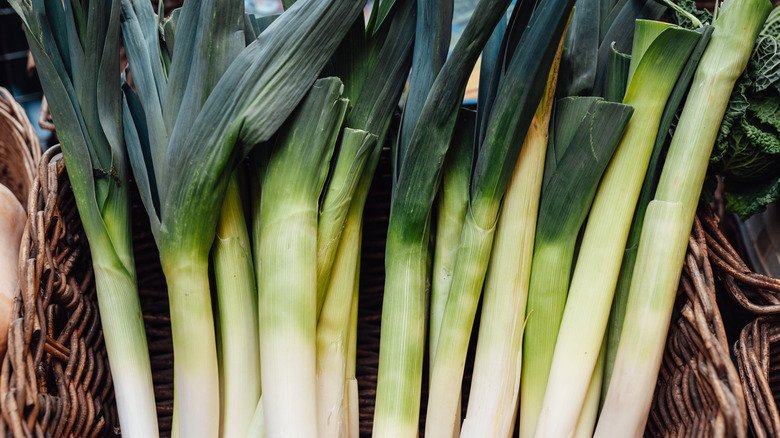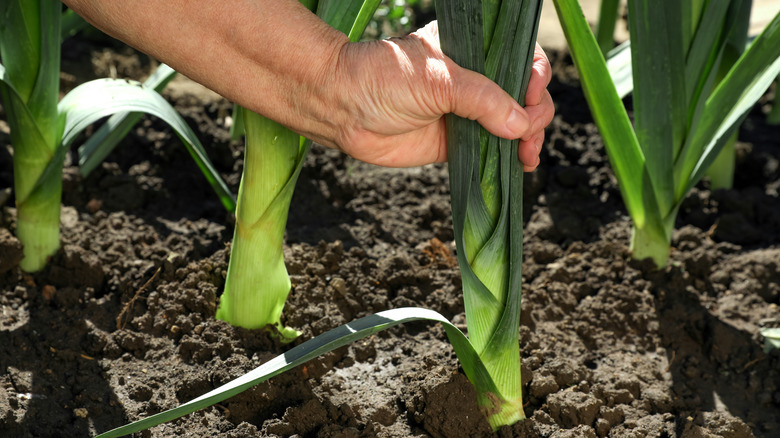The Planting Trick That Makes Leeks Taste Sweeter
The humble leek (Allium porrum) is the national symbol of Wales and is worn on the clothing of Welsh citizens and soldiers to show their patriotism. They are a staple of French cuisine, and are even mentioned in the Bible as a food the Israelites missed while wandering in the desert — leeks would have really livened up their diet of quail and manna. Leeks are an often overlooked vegetable in the United States, but this delectable food is easy to grow and quite versatile. Like onions and garlic, leeks are in the Allium family, and you can use them as you would an onion or shallot. They are milder and sweeter than onions and make a tasty treat eaten on their own, whether grilled, sautéed, or roasted.
There's a planting method that will ensure your veggies taste so much sweeter, milder, and less bitter. Leeks have dark green leaves on top of pale green/white stems, and the lighter the stem, the sweeter it is. The planting method, known as blanching, blocks the sun's rays from hitting the stem, which keeps chlorophyll from turning it green. As your leeks grow, mound soil or straw around the stems so they remain fully covered. Blanching ensures that the edible part of the leek is as pale as possible.
How to blanch leeks
Of course, this doesn't mean leeks should be grown in a dark closet completely devoid of sunlight. Leeks actually prefer at least six hours of full sun exposure per day, but it should hit the dark green leaves and warm the dirt, rather than hitting the body of the leek directly. Leeks are very cold-hardy and will grow year-round in the garden. There are many varieties of leeks, but most take at least 100 days to harvest (the popular Giant Musselburgh variety takes 150 days). In USDA zones 9 to 11, plant leeks in the fall to harvest in spring. For zones 2 to 8, start leeks indoors two months before the last frost and transplant once the temperature reaches at least 45°F.
To transplant, trim the roots and place seedlings at the bottom of a shallow trench and fill with water, but not dirt. Backfill the hole with dirt once the seedlings are around the size of a pencil. Continue covering the stems with dirt as the leeks grow. If your dirt mounds are constantly getting blown or washed away, try blanching your leeks using a collar. Place an empty toilet paper tube around the stem of the seedling, up to the leaves. Push into the ground so the collar stays put, and fill with dirt. The best time to harvest leeks is when the stems are over one inch in diameter.

